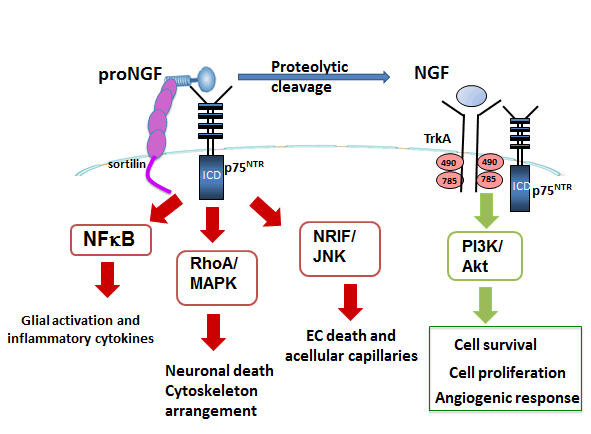
 |
| Figure 1: Schematic representation of the multiple pathways by which proNGF/NGF can contribute to diabetic retinopathy. Diabetes impairs the homeostasis of NGF by decreasing the proteolytic cleavage of the proform resulting in increasing proNGF levels and decreasing NGF levels. Mature NGF binds to tyrosine kinase TrkA receptor in combination with p75NTR causing autophosphorylation of TrkA receptor and activation of P13K/Akt pathway leading to cell proliferation, cell survival and angiogenic response. ProNGF preferentially binds to p75NTR, in combination with its co-receptor sortilin, to activate multiple pathways depending on the interaction of the intracellular domain (ICD) and a given adaptor protein. Interaction of p75NTR ICD with NFkB results in activation of proinflammatory cytokine production. Interaction of ICD with RhoA/MAPK pathway resulting in neuronal death, cytoskeleton arrangement and BRB breakdown. Interaction of the ICD with the neurotrophin interacting factor (NRIF) will activate c-Jun kinase (JNK) resulting in endothelial cell (EC) apoptosis and formation of acellular capillaries, surrogate marker of ischemia. |